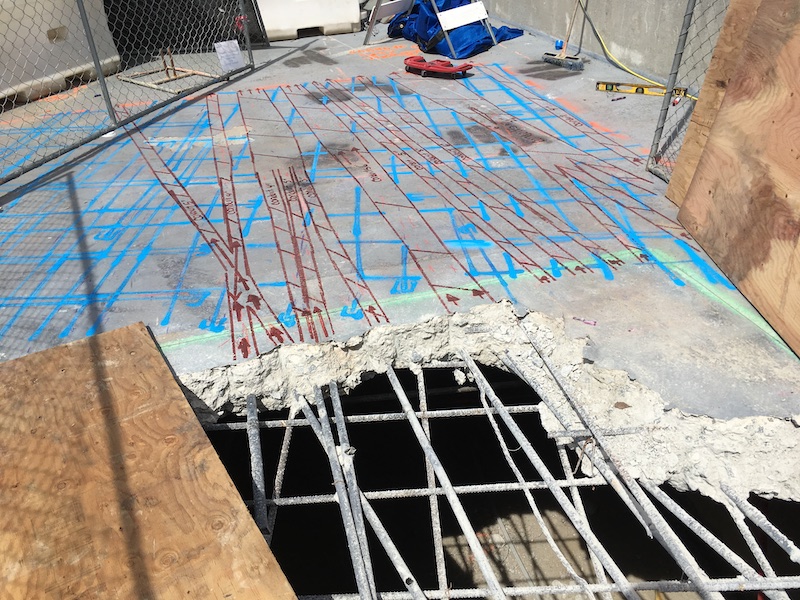Specialist Tips for Ideal Concrete Scanning Results
Specialist Tips for Ideal Concrete Scanning Results
Blog Article
Reveal the Transformative Power of Concrete Scanning in Making The Most Of Effectiveness and Safety And Security
Concrete scanning has emerged as a vital device in the building and construction industry, providing unequaled advantages in enhancing task effectiveness and ensuring safety requirements. The transformative power of concrete scanning exists in its capability to give in-depth insights and real-time information, transforming exactly how projects are planned and performed.
Importance of Concrete Scanning
Ensuring the architectural honesty and security of construction projects starts with the essential action of performing thorough concrete scanning. Concrete scanning is a non-destructive method made use of to find and map subsurface components within concrete frameworks. This process is important in identifying prospective risks, such as rebar, post-tension cables, and conduits, that may be hidden within the concrete. By using advanced modern technologies like ground-penetrating radar (GPR) and electromagnetic induction, building and construction groups can precisely situate these aspects without causing any type of damage to the framework.
Additionally, concrete scanning aids in enhancing task timelines and spending plan by avoiding unanticipated prices and delays that may emerge due to unforeseen obstructions within the concrete. Ultimately, investing in detailed concrete scanning is an aggressive strategy that boosts both performance and safety in building and construction tasks.
Exactly How Concrete Scanning Works
Concrete scanning operates as a vital tool in building and construction jobs by employing innovative innovations to spot and map subsurface elements without causing architectural damage. Ground Passing Through Radar (GPR) and Electromagnetic Induction (EMI) are two primary methods made use of in concrete scanning.
During the scanning procedure, the data accumulated is analyzed in real-time, enabling instant identification of potential threats or challenges beneath the surface area. This info aids in decision-making, guaranteeing that building activities continue securely and efficiently. In addition, 3D imaging software can be utilized to produce topographic maps of the subsurface components, further improving project planning and implementation. By employing these innovative modern technologies, concrete scanning considerably lowers the risk of costly damages and injuries on building and construction websites.
Benefits of Concrete Scanning
One of the main advantages of concrete scanning is the capacity to identify and find embedded things such as rebar, post-tension cable televisions, and conduits properly. Concrete scanning helps in preparation and developing extra successfully, as it provides specific information concerning the location and depth of architectural elements.

Study: Concrete Scanning Success

In an additional situation, a construction firm used 3D concrete scanning to evaluate the problem of aging concrete structures in a historical building. The comprehensive scans provided valuable insights into the level of damage and assisted prioritize upkeep efforts effectively. By proactively attending to areas of concern recognized through scanning, the company had the ability to click this prolong the lifespan of the framework and make sure passenger safety and security.
These case studies highlight the transformative power of concrete scanning in boosting performance, precision, and safety and security in construction projects.
Carrying Out Concrete Scanning in Projects
Carrying out advanced scanning technologies during building jobs has actually ended up being significantly crucial for enhancing precision and security. By integrating concrete scanning right into project preparation and implementation, building and construction groups can recognize possible dangers, such as rebar or post-tension cords, concealed within concrete structures. This proactive approach minimizes the risk of crashes, hold-ups, and pricey rework, inevitably bring about much more effective job timelines and spending plans.
To apply concrete scanning properly, project managers ought to work together closely with skilled click this site scanning specialists to determine the most appropriate scanning strategies for the certain task needs. Involving scanning experts from the onset of a job makes it possible for the team to develop comprehensive scanning strategies that resolve key locations of concern and make certain comprehensive data collection.
Furthermore, including concrete scanning into routine job process can enhance decision-making processes, as real-time scan data supplies prompt understandings right into the problem of concrete structures - Concrete Scanning. This data-driven approach promotes notified problem-solving and makes it possible for groups to make adjustments without delay, fostering a society of effectiveness and safety throughout the task lifecycle

Conclusion
Finally, concrete scanning plays an important role in enhancing performance and security in construction projects. By making use of sophisticated technology to map and find out underlying frameworks within concrete, this process assists to stop expensive errors, ensure architectural stability, and reduce dangers on website. With the ability to uncover covert aspects and supply exact information, concrete scanning confirms to be a beneficial device for maximizing task outcomes and taking full advantage of general success.
Concrete scanning is a non-destructive technique made use of to identify and map subsurface Read Full Article components within concrete frameworks. Additionally, concrete scanning assists in enhancing job timelines and budget plan by avoiding unforeseen costs and delays that might develop due to unpredicted blockages within the concrete. One remarkable instance research entails a large improvement task where concrete scanning played an essential role in guaranteeing project success.In another case, a building and construction firm made use of 3D concrete scanning to examine the condition of aging concrete structures in a historic building. By integrating concrete scanning right into task preparation and implementation, building and construction groups can recognize prospective risks, such as rebar or post-tension cables, hidden within concrete structures.
Report this page